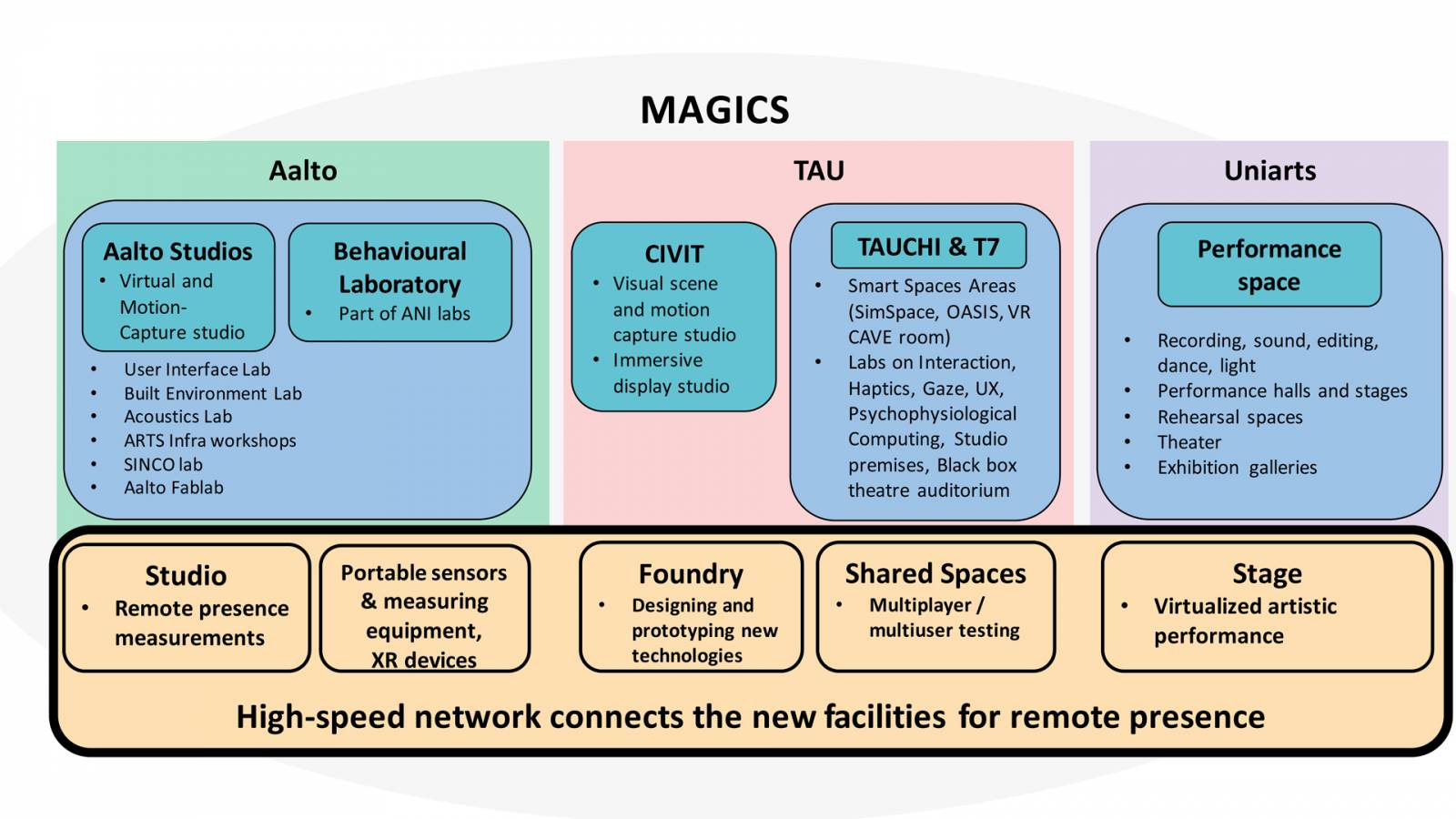Aalto University, the University of the Arts Helsinki, and Tampere University are collaborating to develop a virtual meeting which looks and feels as if all participants were sharing the same space. In addition to the senses of sight and hearing, a feeling of authenticity can also be created through touch and smell.
MAGICS uses the latest digital technology to create artistic performances, realistic games, and other remote presence solutions. The consortium is headed by Professor Mikko Sams of Aalto University, with Professor Atanas Gotchev of Tampere University as the deputy director.
Coronavirus has strongly raised the need for a new kind of telepresence. A telepresence that feels natural can replace physical and social meetings. But this requires research and development of new technologies.
A concrete example of the new technology is the Telepresence collaboration project, a teaching and research project between the University of Coventry and The Centre for Practise as Research in Theatre (T7) and Degree Programme in Theatre Arts, which started in 2015.
More about the project: http://research.tuni.fi/telepresence
The MAGICS equipment allows the researchers to precisely measure and analyse the body functions and facial expressions. The measurements help them to understand how people interact and understand each other, and what kinds of emotions emerge while, for example, playing games.
‘Visual cues, interaction, and senses can be very lifelike. Viewers can move and experience being inside a theatre performance. In addition to realistically recreated visual scenes, they can sense dampness with the help of special gloves, or they can smell synthetically produced odours’, says Atanas Gotchev.
New technology can be used in the performing arts in many ways: for example, performances can be viewed in many locations simultaneously, and scenery can be produced completely virtually.
Collaboration plays a key role in the project. Shared operating models are being created with companies, services are offered, while the best practices are learned.
The MAGICS infrastructure is shared among all three campuses. The infrastructure services of Aalto University cover Aalto Studios and the Aalto Behavioral Laboratory (ABL). Infrastructure at Tampere University focuses on the Centre for Immersive Visual Technologies (CIVIT) and the Tampere Unit for Computer-Human Interaction (TAUCHI) and The Centre for Practise as Research in Theatre (T7). The infrastructure of the University of the Arts Helsinki is anchored in the Centre for Artistic Research (CfAR). Physical and virtual infrastructure services are available to meet the needs of academic personnel and those of industrial product development. Infrastructure contains both stationary and movable equipment.

